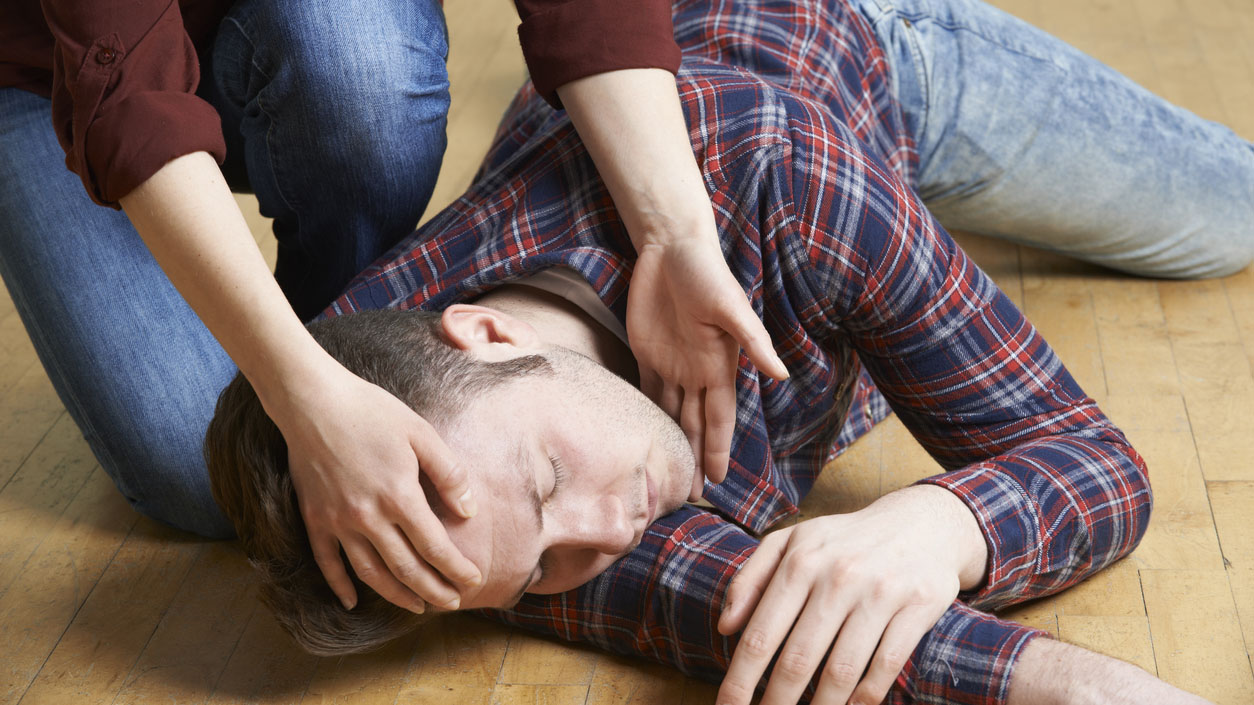Key points
- Seizures are common, affecting 1 in 10 people.
- You can learn to recognize a seizure, keep someone safe during a seizure, and when to call 911 for help.

Overview
Seizures are common. About 1 in 10 people in the United States may have a seizure in their lifetime.1 This means that someday you may need to help someone.
There are easy steps to help someone during and after a seizure.
Recognizing a seizure
Seizures may not look like you'd expect.
- There are many different types of seizures.
- Some seizures cause someone to act confused or stare into space.
- Others cause someone to lose awareness, fall down, and shake.
- Most seizures last just a few minutes.
How to keep someone safe during a seizure
Steps to keeping a person safe during a seizure
- Keep yourself and others calm.
- Stay with the person.
- Remove anything near them that can cause an injury.
- Check to see if they are wearing a medical bracelet for information about any medical conditions, medicines, and emergency contacts.
- If the person is lying down, turn them gently on their side, with their mouth pointing to the ground. This will keep their airway clear.
- Time the seizure to track if it lasts more than 5 minutes. If it does, seek immediate medical attention or call 911.
- When the seizure is over, help them sit in a safe place to recover.
- Once they are alert, comfort them and explain what happened.
- Offer to call a friend or loved one to help them get home safely.

Extra steps for generalized seizures
Generalized seizures affect both sides of the brain and may cause loss of consciousness.
When a person has a generalized seizure, they may:
- Fall down if they lose muscle tone or consciousness.
- Shake or jerk.
- Twitch in body or eyelids.
- Become unaware of what's around them.
To help someone with this type of seizure, follow these steps to keep them safe:
- Ease them to the ground if they appear to be falling.
- Turn them gently onto one side with their mouth pointing to the ground. This will keep their airway clear.
- Clear the space around them to prevent injury.
- Put something soft and flat under their head (like a jacket).
- Take off their eyeglasses.
- Loosen anything around the neck that could block breathing.
- Time the seizure to track if it lasts more than 5 minutes. If it does, seek immediate medical attention or call 911.
When to call for help
Seizures don’t usually require emergency medical attention.
But you should call 911 if one or more of these things happen:
- The seizure lasts longer than 5 minutes.
- They have another seizure soon after the first one.
- They have trouble breathing or waking up after the seizure.
- They are injured during the seizure.
- The seizure happens in water.
It is also important to call 911 if the person having the seizure:
- Has never had a seizure before.
- Has diabetes and loses consciousness.
- Is pregnant.
What to avoid

- Don't hold the person down or stop their movements. This could injure you or them.
- Don't put anything in their mouth. This can hurt their teeth or jaw.
- Don't give mouth-to-mouth breaths during the seizure. People usually start breathing again on their own after a seizure.
- Don't offer water or food until they are fully alert. This is not necessary and could cause them to choke.
Get Seizure First Aid Training
Some people may need to know how to provide more detailed help, especially those who:
- Have loved ones with epilepsy.
- Coach or lead groups.
- Work in public settings such as schools.
Free first aid training
Free, online on-demand training is available through the Epilepsy Foundation.
- Hauser WA, Annegers JF, Rocca WA. Descriptive epidemiology of epilepsy: contributions of population-based studies from Rochester, Minnesota. Mayo Clin Proc. 1996;71(6):576–586. doi:10.4065/71.6.576
